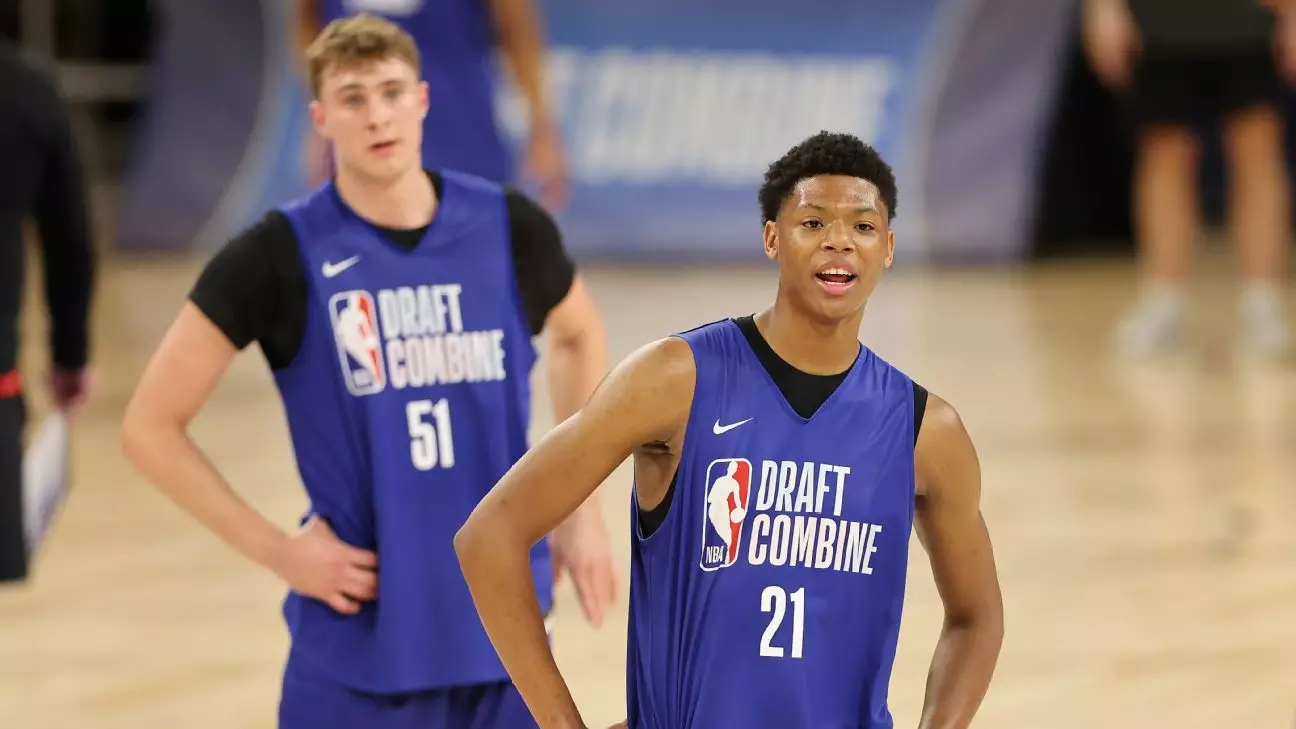In a surprising turn of events, former Rutgers basketball star Ace Bailey has opted out of an impending visit with the Philadelphia 76ers, a team that holds the coveted No. 3 pick in the upcoming NBA draft. This choice has left many within the basketball community scratching their heads. As Bailey stands out as the No. 3 prospect on ESPN’s draft board, his withdrawal from such a significant opportunity is not simply a matter of convenience; it signals a strategic maneuver that could redefine his path to professional basketball.
Bailey’s decision reflects a growing trend among elite athletes who prioritize long-term fit over short-term engagements. While it is common for young prospects to meet with teams during the pre-draft process, Bailey has taken a different route entirely, steadfastly declining invitations from several franchises. It raises an essential question: why would someone in his position forgo these opportunities? His camp reportedly believes he embodies a top-three talent, reinforced by a desire for a defined trajectory toward becoming a star player. This bold strategy turns the traditional recruitment process on its head, emphasizing self-advocacy and clarity in career direction.
Risk or Reward: The Effects of a Limited Engagement
The implications of Bailey’s limited pre-draft engagement extend well beyond mere speculation. While traditional wisdom suggests that pre-draft visits can help a prospect solidify their standing with teams, Bailey’s approach diverges from the norm. By opting out of these opportunities, he may be betting on his skills and potential to speak louder than any face-to-face meeting could. However, this comes with inherent risks.
For teams, the absence of personal interactions can foster concerns about a player’s character and adaptability. While the Philadelphia 76ers and other franchises have scouted Bailey extensively, there remains an air of uncertainty. What does it say about a player who refuses to engage with potential employers? Does it indicate confidence, or does it reveal uncertainty in the player’s ability to navigate the professional landscape? Such questions can shape a team’s perception and, ultimately, their drafting decision.
Shifting Dynamics: The Positioning of Picks
Interestingly, while Bailey navigates his unconventional path, other prospects like Cooper Flagg and Dylan Harper are actively courting teams, affirming their value and readiness. This juxtaposition highlights a fragmented draft landscape; Bailey’s decision could have a ripple effect, impacting not just his future, but the fates of the teams seeking to fill their rosters. Speculation abounds that should teams like the 76ers and Charlotte Hornets decide against drafting him, franchises such as the Washington Wizards, New Orleans Pelicans, and Brooklyn Nets may combatively seek to trade up.
As the draft approaches, Bailey finds himself on the cusp of a transformative moment. Whether his unorthodox strategy solidifies his position as a top-tier talent or leads to a slide down the draft board remains to be seen. The decisions of teams in the next few days may well alter the trajectory of his career.
In an age where personal branding and narrative control are paramount, Ace Bailey’s story straddles the line between audacity and caution. His future hinges not just on talent, but on the networks he builds and the narratives he shapes in a league where every choice counts. As the basketball world watches with bated breath, one thing is certain: Bailey is a name to reckon with.


Leave a Reply